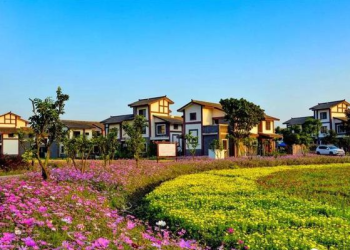In today’s world, where water scarcity is becoming a pressing issue, adopting water-wise gardening practices is not just an option but a necessity. With the right techniques, you can create a beautiful and thriving garden while minimizing water usage. Let’s explore some effective strategies for conserving water in your landscape.
Understanding Water-Wise Gardening
Water-wise gardening, also known as xeriscaping, involves designing landscapes that require minimal water input to maintain. The principles of water-wise gardening revolve around selecting drought-tolerant plants, improving soil quality, and implementing efficient irrigation methods.
Assessing Your Landscape
Before diving into water-saving techniques, it’s essential to assess your landscape’s specific needs. Determine the water requirements of your plants, considering factors such as species, size, and location. Additionally, analyze your soil type and drainage to understand how water moves through your garden.
Planning and Designing a Water-Efficient Garden
When planning your garden, opt for plants that are native or well-adapted to your region’s climate. These plants typically require less water and are more resilient to drought conditions. Grouping plants with similar water needs together allows for more targeted irrigation, reducing water waste.
Incorporating efficient irrigation systems such as drip irrigation or soaker hoses can significantly decrease water usage by delivering water directly to the root zone where it’s needed most.
Soil Management Techniques
Healthy soil plays a crucial role in water conservation. Mulching is a simple yet effective technique to retain soil moisture, suppress weeds, and moderate soil temperature. Additionally, amending your soil with organic matter improves its structure, increasing water retention capacity.
Watering Strategies
Proper watering is key to a water-efficient garden. Water your plants deeply but infrequently to encourage deep root growth and minimize evaporation. Adjust watering schedules based on weather conditions, and avoid watering during the hottest parts of the day to reduce water loss through evaporation.
Consider investing in a smart irrigation controller that adjusts watering times based on real-time weather data, ensuring optimal moisture levels while minimizing water waste.
Maintenance Practices for Water Conservation
Regular maintenance is essential for preserving water in your landscape. Monitor your irrigation system for leaks or inefficiencies, and adjust settings as needed to prevent overwatering. Additionally, keeping weeds and pests under control reduces competition for water, allowing your plants to thrive with less moisture.
Other Water-Saving Tips
In addition to the techniques mentioned above, there are several other ways to conserve water in your landscape. Installing rain barrels or cisterns allows you to collect and store rainwater for later use, reducing the need for supplemental irrigation. Furthermore, recycling household water, such as kitchen sink or shower runoff, can provide an additional source of moisture for your plants.
Conclusion
By implementing water-wise gardening practices, you can create a sustainable and resilient landscape that thrives with minimal water input. From selecting drought-tolerant plants to optimizing irrigation systems, every step towards water conservation contributes to a greener and more water-efficient future.
FAQs After The Conclusion:
- Q: Can water-wise gardening save money on my water bills? A: Yes, by reducing water usage in your landscape, you can see significant savings on your water bills over time.
- Q: Are there any government incentives for adopting water-wise gardening practices? A: Some municipalities offer rebates or incentives for installing water-efficient irrigation systems or replacing water-thirsty lawns with drought-tolerant landscaping.
- Q: Can water-wise gardening help prevent soil erosion? A: Yes, by improving soil structure and moisture retention, water-wise gardening techniques can help mitigate soil erosion caused by heavy rainfall or irrigation.
- Q: Will my garden look dull if I only use drought-tolerant plants? A: Not at all! There are many beautiful and colorful drought-tolerant plants available that can add visual interest to your landscape without requiring excessive water.
- Q: How often should I mulch my garden? A: It’s recommended to replenish mulch in your garden once or twice a year to maintain adequate moisture retention and weed suppression.
- Q: Can I still have a lush lawn with water-wise gardening? A: While traditional turfgrass lawns may require significant water input to maintain their lush appearance, there are alternative grass species and ground covers that are more water-efficient and can still provide a green, attractive lawn.
- Q: Are there any specific plants that are particularly well-suited for water-wise gardening? A: Yes, many native plants and succulents are excellent choices for water-wise gardening due to their natural adaptation to local climate conditions and low water requirements.
- Q: How can I ensure the long-term success of my water-wise garden? A: Regular maintenance, including monitoring irrigation systems, proper watering, and soil management, is essential for the ongoing health and vitality of your water-wise garden.












